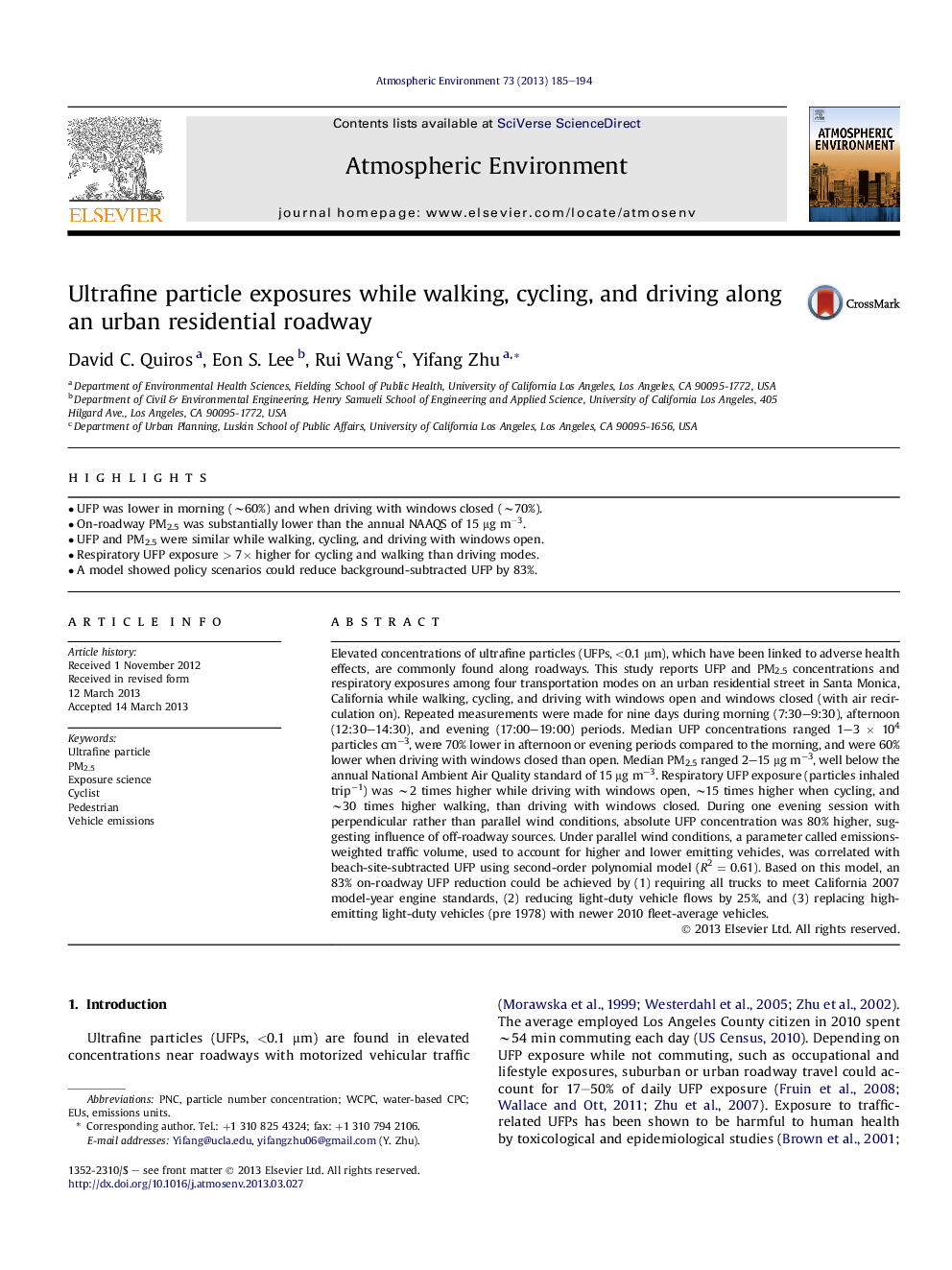| کد مقاله | کد نشریه | سال انتشار | مقاله انگلیسی | نسخه تمام متن |
|---|---|---|---|---|
| 4438235 | 1620398 | 2013 | 10 صفحه PDF | دانلود رایگان |

• UFP was lower in morning (∼60%) and when driving with windows closed (∼70%).
• On-roadway PM2.5 was substantially lower than the annual NAAQS of 15 μg m−3.
• UFP and PM2.5 were similar while walking, cycling, and driving with windows open.
• Respiratory UFP exposure > 7× higher for cycling and walking than driving modes.
• A model showed policy scenarios could reduce background-subtracted UFP by 83%.
Elevated concentrations of ultrafine particles (UFPs, <0.1 μm), which have been linked to adverse health effects, are commonly found along roadways. This study reports UFP and PM2.5 concentrations and respiratory exposures among four transportation modes on an urban residential street in Santa Monica, California while walking, cycling, and driving with windows open and windows closed (with air recirculation on). Repeated measurements were made for nine days during morning (7:30–9:30), afternoon (12:30–14:30), and evening (17:00–19:00) periods. Median UFP concentrations ranged 1–3 × 104 particles cm−3, were 70% lower in afternoon or evening periods compared to the morning, and were 60% lower when driving with windows closed than open. Median PM2.5 ranged 2–15 μg m−3, well below the annual National Ambient Air Quality standard of 15 μg m−3. Respiratory UFP exposure (particles inhaled trip−1) was ∼2 times higher while driving with windows open, ∼15 times higher when cycling, and ∼30 times higher walking, than driving with windows closed. During one evening session with perpendicular rather than parallel wind conditions, absolute UFP concentration was 80% higher, suggesting influence of off-roadway sources. Under parallel wind conditions, a parameter called emissions-weighted traffic volume, used to account for higher and lower emitting vehicles, was correlated with beach-site-subtracted UFP using second-order polynomial model (R2 = 0.61). Based on this model, an 83% on-roadway UFP reduction could be achieved by (1) requiring all trucks to meet California 2007 model-year engine standards, (2) reducing light-duty vehicle flows by 25%, and (3) replacing high-emitting light-duty vehicles (pre 1978) with newer 2010 fleet-average vehicles.
Journal: Atmospheric Environment - Volume 73, July 2013, Pages 185–194